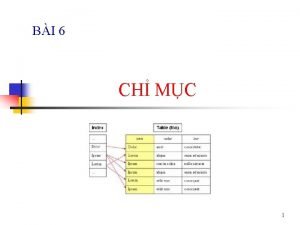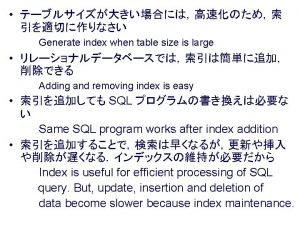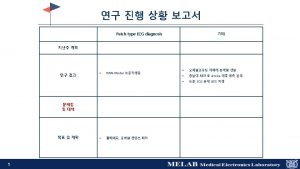Showeet com NETWORKING Ardita Doko INDEX 1 Networking
















- Slides: 16

©Showeet. com NETWORKING Ardita Doko

INDEX 1. Networking 2. Agricultural Networks 3. Instruction Guide 4. Getting your network started 5. Planning your program 6. Surveying Farmers 7. Choosing an Organizational Structure 8. Communicating with your Network 9. Facilitating Network Meetings 10. Maintaining your network

INTRODUCTION • Whether they are companies or public agencies, individual organisations are finding that the only way to content the changing demands and expectations of customers and people is to be embedded in networks of organisations able to bring together different products, services, assets and skills in flexible arrangements and deliver them at the moment and place they are most needed. • In recent years networks have become a major focus of attention in science, business, and also in society at large and throughout a newly emerging global culture.

1. INTRODUCTION TYPES OF NETWORKS • • According to Hawess there are many types of networks commonly found in the business world, including: Voice Financial Supply Transportation Retail Service Content Social

AGRICULTURAL NETWORKS • “In an ideal world, agricultural development networks would not be necessary. Individuals and organisations involved in similar areas of farming, research, development, training, extension and infrastructural support would be well linked”(Starkey, 1992).

• An agricultural network—sometimes called a discussion group, gathering, or conference—is a way for farmers to exchange information, socialize, learn, and connect with peers on a regular, on-going basis. • A network is any group of individuals or organisations that, on a voluntary basis, exchange information or assume joint activities in such a way that their individual autonomy is strengthened by the interactive process of networking.

FEATURES OF A NETWORK • • Objectives Structure Linkages Participation Resources Legitimacy Monitoring and Evaluation

INSTRUCTION GUIDE • • The instruction guide is organized around seven topics, designed to help you establish, promote, and manage a successful farmer network: Getting Your Network Started Planning Your Program Surveying Farmers Choosing an Organizational Structure Communicating with Your Network Facilitating Network Meetings Maintaining Your Network

GETTING YOUR NETWORK STARTED • • • Identify your target audience Create a mission statement Set the geographic area of the network Recruit members Develop a strategy for maintaining members

PLANNING YOUR PROGRAM • • • Skill-building sessions Production classes or workshops Marketing/business classes or workshops Discussions Annual meetings

SURVEYING FARMERS • Surveys are a useful tool for gathering information on how to structure your farmer network and evaluating its progress. • Surveys can capture specific types of information, such as: • Best times/days of the week for people to meet • Frequency with which people would like to meet • Topics people would like covered during meetings • Skills or information learned during trainings • Business relationships that develop out of the network

CHOOSING AN ORGANIZATIONAL STRUCTURE Organizational structures have three core elements: • Type of governance. • Rules by which the organization operates. • Distribution of work.

COMMUNICATING WITH YOUR NETWORK • • • Use multiple communication tools to share information with your network members: Mailings Phone calls Listservs E-mail newsletters Social media

FACILITATING NETWORK MEETINGS • • • As a facilitator organizing a meeting, consider three important details: Environment Meeting logistics Ground rules Common meeting places Running meetings Evaluating your network’s success

MAINTAINING YOUR NETWORK • Training members to become network leaders. • Funding for networks: -Grants -Membership Dues -Class Fees -Sponsorships -Donations

Boosting Adult System Education In Agriculture – AGRI BASE Financed by: Partners:
 Kosovo health ministry
Kosovo health ministry Dậy thổi cơm mua thịt cá
Dậy thổi cơm mua thịt cá Cơm
Cơm Showeet com
Showeet com Xxxx com japanese
Xxxx com japanese Doko regeln
Doko regeln Sdn and traditional networking
Sdn and traditional networking Clustered index và non clustered index
Clustered index và non clustered index Diff between step index and graded index fiber
Diff between step index and graded index fiber Single mode fiber supports meridional rays
Single mode fiber supports meridional rays Dense index vs sparse index
Dense index vs sparse index Simpsons index of biodiversity
Simpsons index of biodiversity Eryhtema
Eryhtema Plasticity index chart of soil
Plasticity index chart of soil Compare india and sri lanka on the basis of hdi
Compare india and sri lanka on the basis of hdi Twine networks
Twine networks Business data communications and networking
Business data communications and networking






























